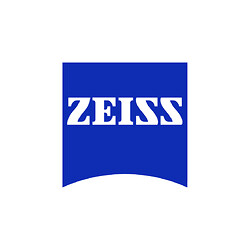ZEISS X-ray machine: The ace to win new customers
MRB Guss guarantees quality with the ZEISS BOSELLO MAX 450kV
Since December 2020, MRB Guss GmbH Herzogenburg near Vienna has been assuring the quality of its iron castings with the ZEISS BOSELLO MAX 450kV machine. It’s an investment that’s paying off. With this device, the company is able to guarantee the quality of the iron castings not only faster, but also more comprehensively. These benefits are helping the firm produce more efficiently and attract new customers.
Once a foundryman, always a foundryman. That’s what it says in the company brochure of MRB Guss. The fascination for iron casting is shared not only by the two managing directors of MRB Guss, Markus Rosenthal and Ralf Bachus, but also by Michael Gundacker, the director of quality management. As he sees it, it’s a fine art to keep the melting and casting process stable enough so that the desired material and parts are made in the required quality, and at a competitive cost. In addition, the company is aware of its responsibility for the environment. It wants to increase the energy efficiency of its castings.
For a non-destructive view inside
According to Gundacker, this goal cannot be achieved without sustainable quality assurance. In addition to analyzing the sand (from which the castings are formed) and the molten mass, the iron castings are of course also inspected thoroughly. It is common in this industry to cut open and analyze sample parts. Where exactly the cut happens is determined by a simulation program, which shows the probabilities for porosities, bubbles or inclusions.
“However, this method can’t tell us for sure if there are defects in other areas of the part,” says the quality manager. In the worst case, the errors can become apparent during the processing, and occasionally after the part is already with the customer. That’s not only a cost and environmental problem. The company’s image suffers too.
To avoid this, the company has been using an X-ray device in Herzogenburg since December 2020. “It’s a big step forward for us – also for our customer acquisition,” explains Gundacker. It’s his ace card, so to speak, to help him win the game.
One device – many benefits
The ZEISS BOSELLO MAX 450kV X-ray machine is used in particular to check the initial master sample and inspect random samples. Only one client, from the aviation sector, wants to X-ray all parts with it.
And although the machine is still rather new, its benefits are already clearly apparent. For example, the startup time for series production has been shortened. That’s good news not only for customers, as they receive their parts faster. It also makes production more profitable.
And because the X-ray results allow for a detailed target/actual comparison with the simulation, the quality of the parts is improving continuously. The X-ray data immediately offer an added value for the design of CAD models and/or to optimize CAD models in order to fulfill the technical casting requirements. “The data can help us avoid errors before they even happen.”
But the most noticeable benefit, says Gundacker, is that the company can now react faster thanks to the ability to do non-destructive and comprehensive inspection. If defects at the relevant spots are detected, the staff can immediately sort out those parts. Because bad parts are then no longer processed, the business acts more profitably and sustainably.
A tough selection process
Although MRB Guss already uses measurement devices from ZEISS and is extremely satisfied with the support it gets, the decision to purchase an X-ray device that costs several hundred thousand euros was no easy sale.
MRB Guss therefore requested offers from various manufacturers. Each company received typical components and was asked to perform a feasibility report on them. This already separated the wheat from the chaff. Not every manufacturer was able to demonstrate a high resolution for the castings, for example for a 600-mm exhaust manifold.
In addition to the performance and support from ZEISS, another factor worked in ZEISS’s favor: the size of its machine. Weighing in at 14-16 tons, the ZEISS machine weighs half as other X-ray machines with the same performance. The design explains why the ZEISS device can be so compact while still providing the operator with the necessary radiation protection.
Although a device with a lower performance would have been sufficient for X-raying most of the castings in MRB Guss’s existing product portfolio, the management decided on the machine with 450 kV. As a result, the device can X-ray metal up to 50 mm. Gundacker is therefore convinced that purchasing the ZEISS device was a “future-oriented decision that is paying off for MRB Guss.”
